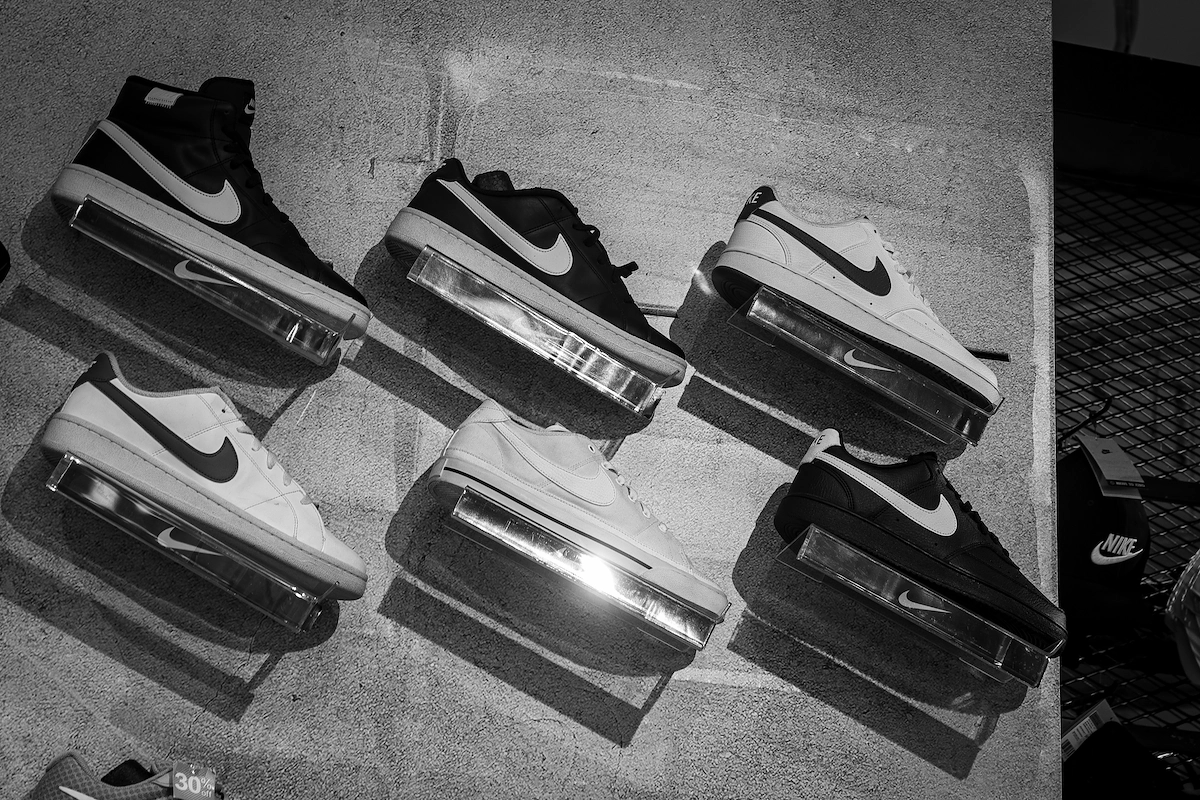Starting a sneaker reselling business is an exciting venture that combines a passion for footwear and an eye for trends with smart business savvy. The market is a multi-billion dollar industry, with consistent demand for exclusive kicks from collectors and fashion enthusiasts alike.
This guide will take you through the practical steps of validating your business concept, acquiring inventory, building supplier relationships, and obtaining necessary licenses to help you launch a successful sneaker reselling business in the U.S.
Step 1: Validate your business idea and plan your finances
Market and competitor research
Begin by immersing yourself in the sneaker world. Follow platforms like Hypebeast and Sneaker News daily. You can also use Google Trends to check search interest for specific models you plan to target, which helps you spot what is about to become popular.
For competitor data, use marketplaces like StockX and GOAT as your research databases. Look at the sales history for sneakers similar to what you want to sell. Note the price changes, sales volume, and average resale value over the last 90 days.
Budgeting your startup costs
Your initial inventory will be the largest expense. A budget of $1,500 to $3,000 is a realistic start, which allows you to acquire 5-10 pairs of in-demand sneakers. A frequent misstep is buying too much inventory without first testing the market.
Beyond inventory, account for other costs. Setting up an LLC can range from $100 to $500 depending on your state. Shipping supplies will be about $100. Also, remember that marketplace fees on platforms like GOAT or eBay can take 10-15% of your final sale price.
Here are 3 immediate steps to take:
- Track 5-10 upcoming sneaker releases on platforms like Hypebeast or Sneaker News.
- Analyze the 90-day resale price history for 3 comparable models on StockX.
- Create a startup budget that includes inventory, potential legal fees, and shipping supplies.
Step 2: Set up your legal structure and get licensed
You might want to consider forming a Limited Liability Company (LLC). This structure protects your personal assets, like your car or home, from business debts. For tax purposes, an LLC is a pass-through entity, meaning profits and losses are reported on your personal tax return.
To form an LLC, you will file Articles of Organization with your state's Secretary of State, which costs between $50 and $200. After that, apply for a free Employer Identification Number (EIN) directly from the IRS website. You need an EIN to open a business bank account.
Permits and licenses you will need
A Seller's Permit, also called a Resale Certificate, is non-negotiable. It allows you to buy inventory tax-free and requires you to collect sales tax from customers. Apply through your state's Department of Revenue. Many new resellers mistakenly skip this and lose margin by paying sales tax on inventory.
You will also likely need a general business license from your city or county. Check their official website for the specific requirements and fees, which typically range from $50 to $150 annually.
Here are 3 immediate steps to take:
- File for an LLC with your Secretary of State to protect your personal assets.
- Apply for a free Employer Identification Number (EIN) on the IRS website.
- Register for a Seller's Permit with your state's Department of Revenue.
Step 3: Insure your business and manage risk
Key insurance policies for resellers
You should first consider Business Property Insurance. This policy protects your valuable inventory from theft, fire, or water damage. A common oversight is to assume a homeowner's or renter's policy will cover your stock, but most limit business property coverage to around $2,500.
Aim for a policy that covers the full resale value of your inventory, which might start at $10,000 to $20,000. Annual premiums for this level of coverage typically range from $400 to $800. This is the single most important policy for an online reseller.
General Liability Insurance becomes relevant if you do in-person meetups or have a physical location. It covers claims of customer injury or property damage. For providers, you might want to look at companies like Hiscox, The Hartford, or Next Insurance that cater to small online businesses.
Here are 3 immediate steps to take:
- Calculate the total resale value of your sneaker inventory.
- Review your homeowner's or renter's policy to confirm its business property coverage limit.
- Get quotes for Business Property Insurance from at least two providers like Hiscox or The Hartford.
Step 4: Set up your workspace and get equipped
Your workspace setup
You do not need a commercial storefront to start. Most resellers begin at home. Designate a clean, dry space of at least 50-100 square feet, like a spare room or a large closet, to store your inventory safely. Check your local city's rules on "home occupation" to ensure you comply.
Photography and shipping gear
Clear photos sell sneakers. A simple lightbox for photography costs between $50 and $150. You will also need a shipping scale, which runs about $30, and sturdy shelving like an IKEA Kallax unit for around $100 to keep your boxes organized and off the floor.
Many new sellers try to save money by printing shipping labels on paper. This is slow and looks unprofessional. You should consider a thermal label printer like a Rollo or Dymo, which costs about $200. It is a smart upfront investment that saves significant time.
For shipping supplies, look at providers like Uline or The Boxery. Buying boxes in bulk quantities of 50 or 100 dramatically lowers your per-shipment cost. A standard 14x10x6 inch box is a good starting size for most sneaker boxes.
Here are 3 immediate steps to take:
- Measure and clear a 50-100 square foot area in your home for inventory.
- Create a budget for your initial equipment, including a lightbox and thermal printer.
- Compare bulk pricing for 50 shipping boxes from a supplier like Uline.
Step 5: Set up your payment processing
Most of your sales will be immediate, full-price transactions. When selling on marketplaces, payment is handled for you. For direct sales at sneaker conventions or local meetups, you need your own payment solution. Watch out for high transaction fees, as many processors charge 2.5% to 3.5%.
For resellers who need to accept payments on-site or on-the-go, JIM offers a streamlined solution. With JIM, you can accept debit, credit, and digital wallets directly through your smartphone. At just 1.99% per transaction with no hidden costs or extra hardware, it is great for in-person sales.
- Get Started: Download the JIM app for iOS.
- Make a Sale: Type the sales amount, hit sell, and ask your customer to tap their card or device on your phone.
- Access Funds: Your money is available right on your JIM card as soon as the sale is done.
Here are 3 immediate steps to take:
- Review the payment processing fees for any marketplaces you plan to use.
- Calculate the fee on a hypothetical $250 sneaker sale using JIM's 1.99% rate.
- Download the JIM app to familiarize yourself with its interface for future in-person sales.
Step 6: Fund your business and manage your finances
Securing your startup capital
Most resellers start with personal savings. You might also use a 0% APR business credit card for inventory, but be careful. A common misstep is letting high interest accumulate on shoes that do not sell quickly, which can wipe out your profit margins.
For a larger inventory purchase, an SBA Microloan is a solid option. These loans offer up to $50,000. To qualify, you typically need a business plan and a personal credit score above 650, with interest rates between 8% and 13%.
Managing your cash flow
You should plan to have about $5,000 to $10,000 in working capital for your first six months. This amount covers new inventory, shipping supplies, and marketplace fees while you await payouts from sales. It ensures you can keep your business running smoothly.
From day one, open a separate business bank account. This makes tax season much easier and gives you a clear view of your profitability. You can also use software like QuickBooks Self-Employed to track every expense and sale right from the start.
Here are 3 immediate steps to take:
- Open a dedicated business bank account to keep your finances separate.
- Research SBA Microloan lenders in your state if you need external funding.
- Set up a bookkeeping system with software like QuickBooks Self-Employed.
Step 7: Hire your team and streamline operations
When to make your first hire
You will likely be a one-person show at the start. Handle every task yourself, from sourcing to shipping. This gives you a deep understanding of your business before you bring anyone else on board.
Once you consistently ship more than 10-15 pairs a day, or your monthly revenue surpasses $10,000, it is time to consider help. Many new resellers hire too soon, which can drain cash flow. Wait until order fulfillment consumes more than 3-4 hours of your day.
Your first hire should be a part-time Inventory and Shipping Assistant. Their duties would include inspecting sneakers, taking photos, packing orders, and managing stock. Expect to pay an hourly rate of $15 to $20 for this role. No special certifications are needed.
Systems to manage your operations
At first, a simple Google Sheet is enough to track your inventory and sales. Create columns for the sneaker model, size, purchase cost, sale price, and date sold. This gives you a clear view of your profit per pair.
As your inventory grows beyond 50 pairs, manual tracking becomes risky. You might want to use an inventory management app like Sortly. It allows you to create visual entries with photos, which helps prevent mix-ups and lost stock.
Here are 3 immediate steps to take:
- Track your daily order volume for 30 days to establish a baseline.
- Create a basic inventory tracking spreadsheet with Google Sheets.
- Draft a simple job description for a part-time Inventory and Shipping Assistant.
Step 8: Market your business and find customers
Build your brand on social media
Instagram and TikTok are your primary marketing channels. You should post high-quality photos and short-form videos, like unboxings or on-foot looks. Use specific hashtags such as #Jordan1, #yeezy, and #sneakerreseller to reach your target audience.
Simply posting photos is not enough. You need to engage with your audience. Respond to every comment and DM. Run polls about upcoming drops or ask questions to boost interaction. An engagement rate of 3-5% is a healthy target for your posts.
Optimize your marketplace listings
Your reputation on platforms like eBay and Grailed directly impacts sales. A feedback score above 99% can often justify a 5-10% higher price. You should ship within 24 hours and communicate clearly with buyers to build that trust from the start.
Many sellers upload just a few quick photos. Instead, you should provide at least 10 high-resolution images for each listing. Show all angles, the box, the size tag, and any potential flaws. This transparency reduces buyer questions and can speed up sales.
Here are 3 immediate steps to take:
- Create an Instagram business account and post your first unboxing video.
- Research and list 10 relevant hashtags for a sneaker you plan to sell.
- Review a competitor's eBay listing and identify three ways to improve your own.
Step 9: Set your pricing strategy
Pricing models and research
Your pricing will be almost entirely market-driven. Use platforms like StockX and GOAT as live databases. Look up the exact sneaker, size, and condition to see its current market value and 90-day sales history. This data tells you what buyers are actually willing to pay right now.
Aim for a net profit margin of 30-50% after all expenses. For example, if you buy a shoe for $200 and the market price is $350, your gross profit is $150. After a 10% platform fee ($35) and $15 for shipping, your net profit is $100.
A frequent mistake is only looking at the sale price and forgetting the deductions. Those platform fees, shipping costs, and even the cost of your shipping box will reduce your final take-home pay. Always calculate your net profit, not just the gross spread.
Also, remember that price varies by size and condition. A deadstock pair in a popular size like 10 or 11 might sell for 10-20% more than the same shoe in a less common size. Always check the specific "last sale" data for the exact size you are listing.
Here are 3 immediate steps to take:
- Research the 90-day price history of a target sneaker on StockX in your size.
- Calculate the net profit on a hypothetical $350 sale, subtracting a 10% marketplace fee and a $15 shipping cost.
- Compare the price of a deadstock sneaker to a used one on GOAT to see the condition premium.
Step 10: Maintain quality and scale your operations
Upholding your quality standards
Define your quality standards from day one. For "deadstock" pairs, this means they are unworn with the original box and all accessories. For used pairs, create a simple 1-10 rating scale and use it consistently in your descriptions to build buyer trust.
Your metrics will tell the story. Aim for a customer feedback score above 99% and a return rate below 2%. These numbers are your best indicators of product quality and description accuracy. You should track them weekly to catch any issues early.
Scaling your operation
Once your inventory grows past 100 pairs, or your monthly revenue consistently exceeds $15,000, it is time to think bigger. This is the point where you might move from marketplaces to your own Shopify store to build a brand and increase margins.
Many resellers get excited and rent a small warehouse too early, which drains cash. A better first step is to upgrade your software. An app like Sortly helps manage a large inventory, and Shopify gives you a dedicated sales channel without the high overhead.
Here are 3 immediate steps to take:
- Create a 1-10 condition rating scale for your used sneakers.
- Set up a spreadsheet to track your feedback score and return rate weekly.
- Explore the basic plan features on Shopify's website.
Starting your sneaker reselling business is a marathon, not a sprint. The most successful resellers share a genuine passion for the shoes and the stories behind them. Trust your knowledge, stay consistent, and build your reputation with every sale. You are ready to begin.
For those in-person sales, a simple payment process helps. JIM lets you accept cards right on your smartphone for a flat 1.99% fee, no extra hardware needed. This makes getting paid easy, so you can focus on your next move. Download JIM and be ready for your first customer.















